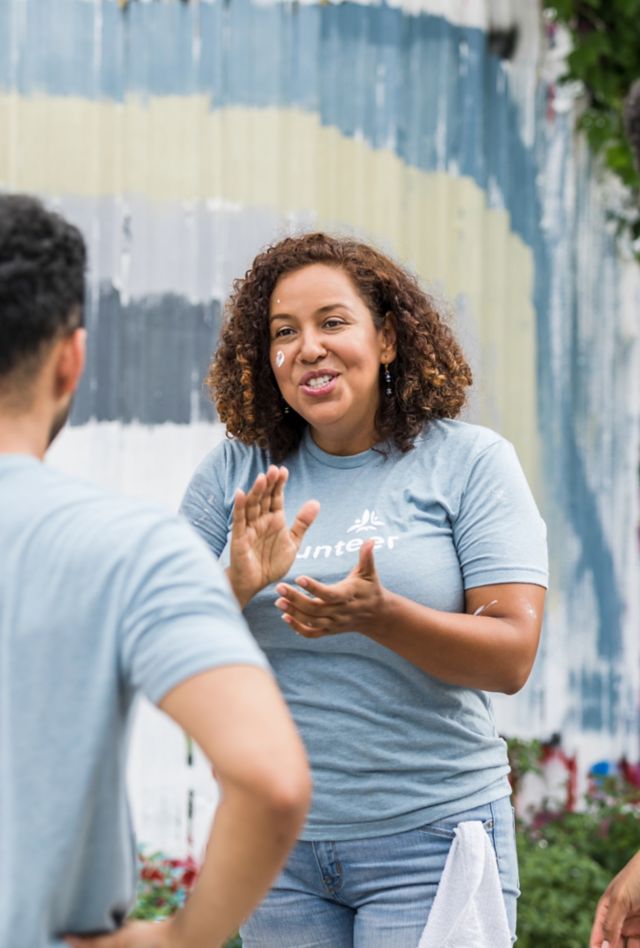The Community-Engaged Research Framework

Petry Ubri
Anmol Sanghera
Sabrina Avripas
Ashani Johnson-Turbes
For inquiries, email:
July 2025
This research brief describes the Community-Engaged Research Framework and highlights strategies for applying the principles of the Framework in practice. The Framework consists of six principles, grounded in theory and practice, which inform community engagement. It serves as a conceptual model to guide researchers in authentically engaging community members and organizations in social and behavioral science research.
Introduction
This Research Brief describes the Community-Engaged Research (CEnR) Framework, or “the Framework,” six principles for engaging communities throughout the full research process and strategies for applying the principles in practice. The Framework is grounded in theory and existing community engagement literature and frameworks (e.g., community-based participatory research, community-based participatory action research, participatory health research, community-driven research, the Engagement, Governance, Access, and Protection (EGAP) Framework), work from organizations like the Centers for Disease Control & Prevention (CDC) Agency for Toxic Substances and Disease Registry (ATSDR), Michigan Public Health Institute (MPHI), Patient-Centered Outcomes Research Institute (PCORI), and the New York City Department of Health and Mental Hygiene, and NORC experience on multiple projects, including NORC’s work with the Chicago Community Alliance. It serves as a conceptual model for researchers and communities to use to authentically engage each other in social and behavioral science research.
Community-Engaged Research
Community-engaged research is an approach to research that joins researchers with communities as partners throughout the full cycle of the research process. Its emphasis is on the relationship between researchers and communities, not on the methodological approach to conduct the research; teams can use both qualitative, quantitative, and mixed methods. A “team” consists of individuals, community-based organizations, researchers, evaluators, community leaders, and other key individuals, entities, or partners as determined by the project.
Exhibit 1: Continuum of Community Engagement in Research

Source: Adapted from the ATSDR Principles of Community Engagement and Wilder Involving Community Members in Evaluation: A Planning Framework
Community-engaged research exists along a continuum (Exhibit 1) that ranges in spectrum of community involvement from less (community as advisor) to more (community as equal partner or as leader) engagement. Teams should strive to reach a level of shared leadership; however, time and resource constraints, historical mistrust, and competing priorities may make this level of engagement in every project difficult.
Community-engaged research may improve validity and relevance of data and results from the study, increase the data’s relevance to community needs, enhance use of the data to create behavioral, social, services, or policy change, and increase the capacity of both communities and research.
The Community-Engaged Research Framework
The Community-Engaged Research Framework (Exhibit 2) consists of six principles for researcher and community partnerships to apply when engaging throughout the full research process. The inner circle displays the six principles essential to community engagement throughout each phase of the research process. The principles are not listed in any specific order and apply to all steps of the research process. These principles apply regardless of where a research study is on the continuum of community engagement. The outer ring lists the phases of the research process, adapted from the Culturally Responsive Evaluation Framework, which centers both the theory and practice to ensure evaluation is responsive to values and beliefs. We have modified this evaluation framework to include the research process more broadly.
Exhibit 2: Community-Engaged Research Framework

© 2023 NORC. Source: Adapted from the Culturally Responsive Evaluation Framework and based on principles adapted from various frameworks for community-engaged research.
This section describes each principle, and the actionable strategies teams can use to apply the principle throughout the research process. While we describe strategies within a specific principle, many are applicable across principles.
PRINCIPLE: AVOIDANCE OF HARM
All team members understand the immediate and broader implications of the research in context (e.g., community, society, systems) and actively avoid harming the communities in which the project is embedded.
All team members recognize how the research process can impact communities and how the community and researchers benefit. Avoidance of harm[1] also requires listening to and respecting community expertise to better understand harm and strategies for avoidance. Avoiding or doing no harm is especially important in research with historically and contemporarily underserved populations.
Avoidance of harm prevents researchers from perpetuating a cycle of negative or exploitative interactions between communities and researchers, governments, and other systems, which has resulted in distrust among underserved communities. It also helps teams develop appropriate protections to mitigate risks.
Actionable Strategies
Understand historical and contemporary contexts and their impact on community(ies). Understanding communities’ context, needs, and sociopolitical environment is iterative; it requires remaining open, asking questions, conducting needs assessments, and stepping back when needed.
- Define community and harm in partnership with communities, and understand key principles and trauma. Understand how systems of oppression influence study design, implementation, and dissemination, and adapt research processes and analysis to this context.
- Actively challenge systems of oppression and injustice, including those lingering in some research traditions, by improving coordination, enhancing existing services, and identifying, mobilizing, and strengthening assets and resources that enhance community’s capacity to make decisions.
Implement strategies to mitigate harm. Researchers’ actions may unknowingly or unintentionally harm communities.
- Develop research in partnership with communities or use existing frameworks to mitigate harm if there are adverse effects of research actions.
- Prioritize the expertise of communities most affected by the harm when developing solutions to mitigate harms and challenges.
Maintain community-researcher relationships beyond one project or funding period. Allocate adequate resources to maintain relationships with communities over the long-term. Continually reflect, assess, and communicate to maintain and deepen relationships for long-term action and sustainability. Take part in community meetings and events, meet community leaders, and build and foster relationships.
PRINCIPLE: SHARED POWER IN DECISION-MAKING
All team members participate collaboratively and cooperatively in all decisions within each phase of the research process.
Shared power in decision-making ensures teams incorporate the experiences and needs of communities into every aspect of the research process, from conception to dissemination, and use findings to inform policies, programs, and services. Teams establish a governance structure that includes the voices of communities directly impacted by the issue or topic they are researching and employ equitable structures of decision-making and contribution. This approach helps overcome non-participatory governance structures that are researcher-led with little room for community input or involvement, which can result in research that does not address community needs or interests.
Actionable Strategies
Include people with subject matter expertise and lived experiences to ensure the team reflects the community in which the project is embedded. Identify gaps in expertise and engage additional partners to fill gaps.
Establish governance structures that eliminate non-participatory power hierarchies that de-value community experience and expertise.
- Create structures that promote power sharing to overcome power differentials. Include avenues for shared decision-making (e.g., co-principal investigators, co-authors).
- Overcome relational dynamics that limit opportunities and treat all team members with integrity and respect (e.g., do not undermine or invalidate people’s experiences, thoughts, or ideas; practice active listening; be considerate of others’ time, schedules, language, and norms).
Discuss up front what communities want to contribute and ultimately get from the research. Collectively establish parameters for data ownership and dissemination of findings. Promote opportunities for communities to access their collective data and research protocols by giving data and results back to the communities in which the research takes place.
PRINCIPLE: TRANSPARENCY & OPEN COMMUNICATION
Researchers and community partners communicate openly and honestly about power dynamics and decision-making processes around project objectives and research processes, resources and finances, challenges and limitations, data, research findings, and dissemination strategies.
Transparency and open communication require that all team members know who is involved in the study and why; the intent and purpose of a project; how resources are shared and allocated; and the apparent and hidden potential benefits, harms, and limitations of a project.
Lack of transparency may result in lack of trust if communities feel like they are being taken advantage of or do not understand researchers’ motivations and intentions. Transparency and open communication create more authentic working relationships, build trust, and help mend relationships between researchers and communities; build on avoidance of harm to reduce the risk of unintentionally harming communities; demonstrate integrity for working through difficult issues; and improves investment in the relationship to promote sustainability.
Actionable Strategies
Collaboratively establish open communication approaches and channels.
- Determine methods, cadence, and mode of communication and meeting coordination.
- Set schedules, establish points of contacts and preferred formats for communication, and set timelines and frequencies of communication.
Minimize hierarchy in communication processes, “gatekeepers,” and barriers to lines of communication. Share information readily with each member of the team about research processes and objectives, roles, motives, resources and finances, progress, timelines, etc. at every stage and at every level of the project.
PRINCIPLE: MUTUAL ACCOUNTABILITY & RESPECT
Develop a structure of incorporating input into decision-making processes, promoting commitment, and addressing discord directly.
Teams collaboratively define roles and decision-making authority, establishing a shared vision for the partnership and the research. They also continually assess progress towards achieving that vision throughout the decision-making process. Teams facilitate discussions that allow for respectful discord and a process for reconciling discord in every phase of the research process.
Non-participatory research that lacks mutual accountability and respect risks members losing interest and investment in the work, leading to a lack of respect for values and needs. Mutual accountability and respect promote collaboration and continued involvement of members throughout all phases of the research.
Actionable Strategies
Collectively develop charters and establish ground rules.
- Develop partnership arrangements (e.g., memorandum of understanding) that document the scope and nature of the partnership and align scope with each member’s capacity. Determine where on the continuum of engagement the study and relationships lie and set expectations for that relationship early and often.
- Delineate responsibilities and expectations for each person on the team. Set realistic commitments and provide opportunities to share progress towards those commitments.
- Develop a vision statement for the work and a charter for upholding and making progress towards that vision. Revise the charter as needed.
- Create and implement decision-making protocols to promote follow through and commitment to roles and responsibilities, ways to track progress on achieving the goals and vision of the partnership, and continually share lessons learned.
Establish structures to overcome discord.
- Develop ground rules for reconciling discord. Make time and space for individuals to speak comfortably and express discord without fear.
- Acknowledge missteps, challenges, and limitations and work openly to address them. Be willing to adapt throughout the partnership and process.
PRINCIPLE: ACCESSIBILITY & DEMONSTRATED VALUE
Value time and contributions of all team members and develop flexible and equitable methods of engagement.
Teams demonstrate accessibility and demonstrated value through fair and equitable compensation, reasonable and thoughtful requests for time, and flexibility and accessibility in methods of engagement and communication.
Non-participatory research may prioritize researcher views, perspectives, and methods of engagement. Participatory research recognizes that each team member brings their own unique perspectives and skills and adds valuable experiences, resources, and social networks to the research process. It also considers each team member’s barriers to engagement and establishes approaches to overcome those barriers. Accessibility and demonstrated value promote greater acceptance of alternative perspectives, trust, and engagement.
Actionable Strategies
Acknowledge all team members and value their expertise, skills, and contributions.
- Create a shared space that values all team members’ contributions and voices to facilitate co-design, co-creation, and shared decision-making, and to advance individual and collective development, growth, and learning.
- Integrate opportunities for relationship-building activities, informal networking, team building, and engagement outside of project activities.
- Ask how individuals and communities would like to be acknowledged and give credit for contributions. Create publication and data use guidelines.
- Collaboratively determine adequate compensation structures for all members’ contribution and time in their preferred method and form of value.
Demonstrate an understanding of and respect for local practices and norms.
- Understand that engagement and relationship building take time. Allow sufficient time to establish relationships and account for the limited time some members have for engaging in research.
- Conduct self-reflection. Ask questions and take time to understand local practices and nuances.
- Understand and address barriers to engagement. Provide accessible modalities of participation and access, including flexibility in meeting times and location, interpreters and translated materials, plain language materials, childcare, transportation, and technology support. Conduct engagements at times and in places convenient to communities. Offer disability accommodations and be flexible with requests for time commitment and deadlines.
PRINCIPLE: CAPACITY BRIDGING & CO-LEARNING
All team members learn from each other and engage in bi-directional feedback and conversation.
Capacity bridging[2] and co-learning expands tools, resources, skills, and knowledge among all team members. It also promotes sustainability beyond one research project or funding opportunity. Embedded throughout the research process are educational opportunities for all team members to become agents for community change. Teams should work together to re-define the research process and relationship, not to transform community partners into researchers (unless that is the ask of community partners). Non-participatory research that focuses solely on building the capacity of community members falls short in fostering bi-directional knowledge, skills, and capacity. Researchers should learn about historical and contemporary local context, lived experiences of community partners, and community engagement strategies.
Actionable Strategies
Facilitate the reciprocal transfer of knowledge, skills, and capacity. Maintain open dialogue, conduct and receive trainings, and bi-directionally share information, tools, and data.
Translate knowledge into action. Document and share lessons learned about what works and what does not work about the process, and partnership successes, weaknesses, and challenges to further facilitate co-learning. Understand how results from the study can improve programs, policies, or services to benefit both the advancement of science and the community.
Affirm community strengths and assets. Conduct activities like community asset mapping and strengths, weaknesses, opportunities, and threats (SWOT) analyses, and understand each team member’s perspectives, knowledge, and expertise. Highlight and affirm community strengths. Employ multiple methods and forums for community involvement beyond the community members who are part of the project team (e.g., advisory boards, town halls, listening sessions, public comment).
Conclusion
The Community-Engaged Research Framework is a conceptual model that guides community engagement using the following six key principles: (1) Avoidance of Harm; (2) Shared Power in Decision-Making; (3) Transparency and Open Communication; (4) Mutual Accountability and Respect; (5) Accessibility and Demonstrated Value; and (6) Capacity Bridging and Co-learning.
Applying these principles and their associated actionable strategies facilitates research and evaluation that centers lived experience and community. Community-engaged research will vary depending on the community, project, client, capacity, and available funding and resources. The Community-Engaged Research Framework is a model that teams can tailor as needed to their specific research, needs, context, and communities under inquiry. This research brief shares NORC’s Community-Engaged Research Framework. A subsequent research brief will discuss strategies for putting the framework into practice.
Acknowledgements
This Community-Engaged Research Framework was made possible with internal NORC funding. We thank the following:
- Work group members: Manal Sidi, Anna Schlissel, Chandria Jones, James Iveniuk, Jocelyn Wilder, and Stefan Vogler for their contributions to framework development.
- NORC reviewers: Roy Ahn, Michelle Johns, Carly Parry, and Vince Welch.
- External reviewers: Carmen Hughes, Health IT Division Director, National Center for Primary Care, Morehouse School of Medicine and Hager Shawkat, Program Director, Sauti Yetu Center for African Women.
References
[1] "Do No Harm,” a principle requiring health care providers to consider if the risk of their actions will hurt a patient versus improve a patient’s condition, is central to health care. Its origins trace back to the Hippocratic Oath and its development in the 1990s by Mary Anderson as an approach to working on conflict affected situations. In social science research, the interpretation of “do no harm” should also weigh the risk of harming an individual or potential benefits from data collection, analysis, or results dissemination. Like in medicine, the goal of research should be to promote wellbeing, in line with beneficence. See Kinsinger (2010) for reference.
[2] While capacity building refers to building capacity, knowledge, and skills, of someone, usually a community person, to a research team, capacity bridging expands this notion to acknowledge that one person can bring many things to their position on a team. It also acknowledges the reciprocity of knowledge sharing between academics, researchers, community-based researchers, and individuals – so that all members are learning from each other. This term was coined by the AHA Centre.
About NORC
NORC at the University of Chicago conducts research and analysis that decision-makers trust. As a nonpartisan research organization and a pioneer in measuring and understanding the world, we have studied almost every aspect of the human experience and every major news event for more than eight decades. Today, we partner with government, corporate, and nonprofit clients around the world to provide the objectivity and expertise necessary to inform the critical decisions facing society.






